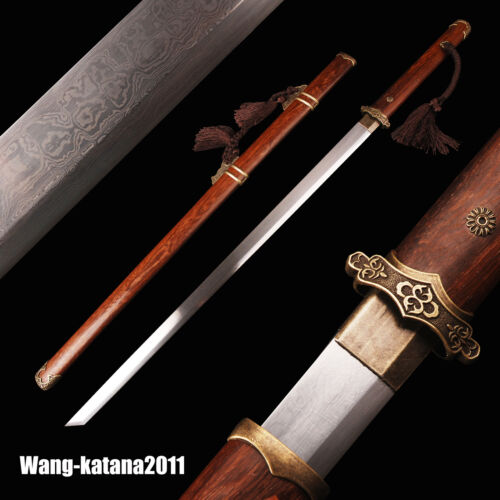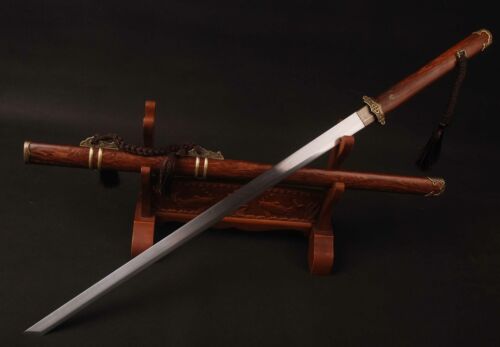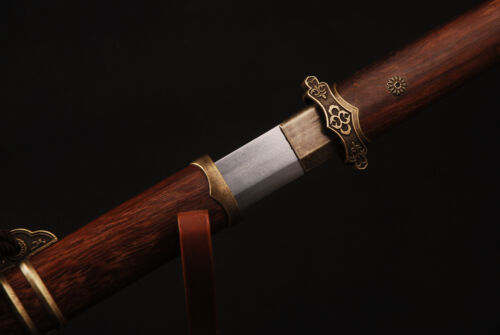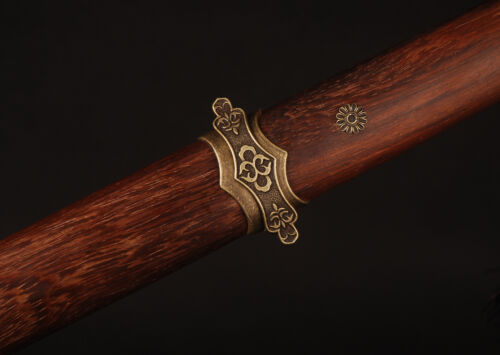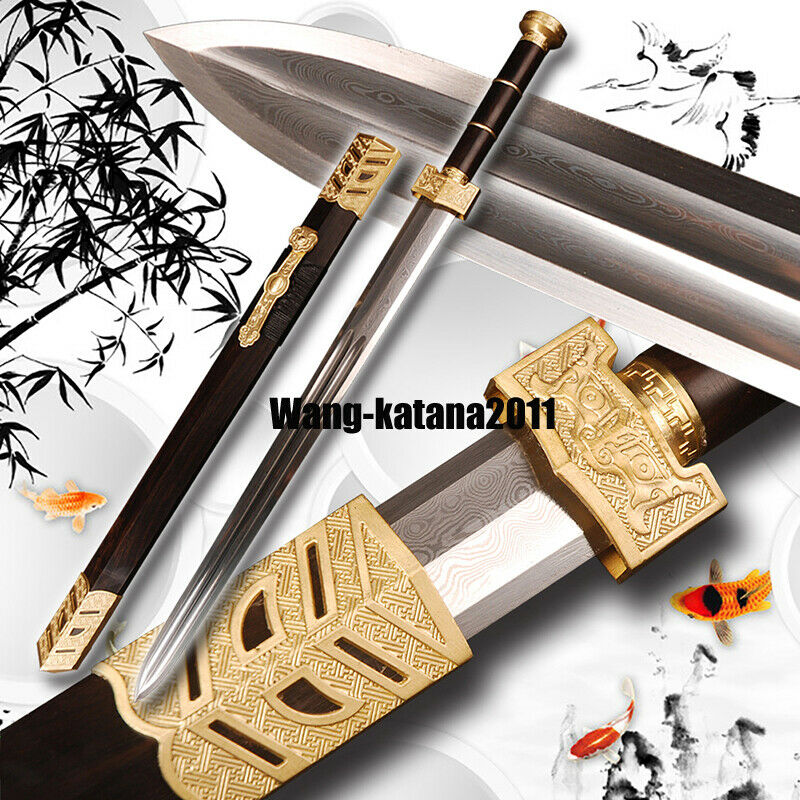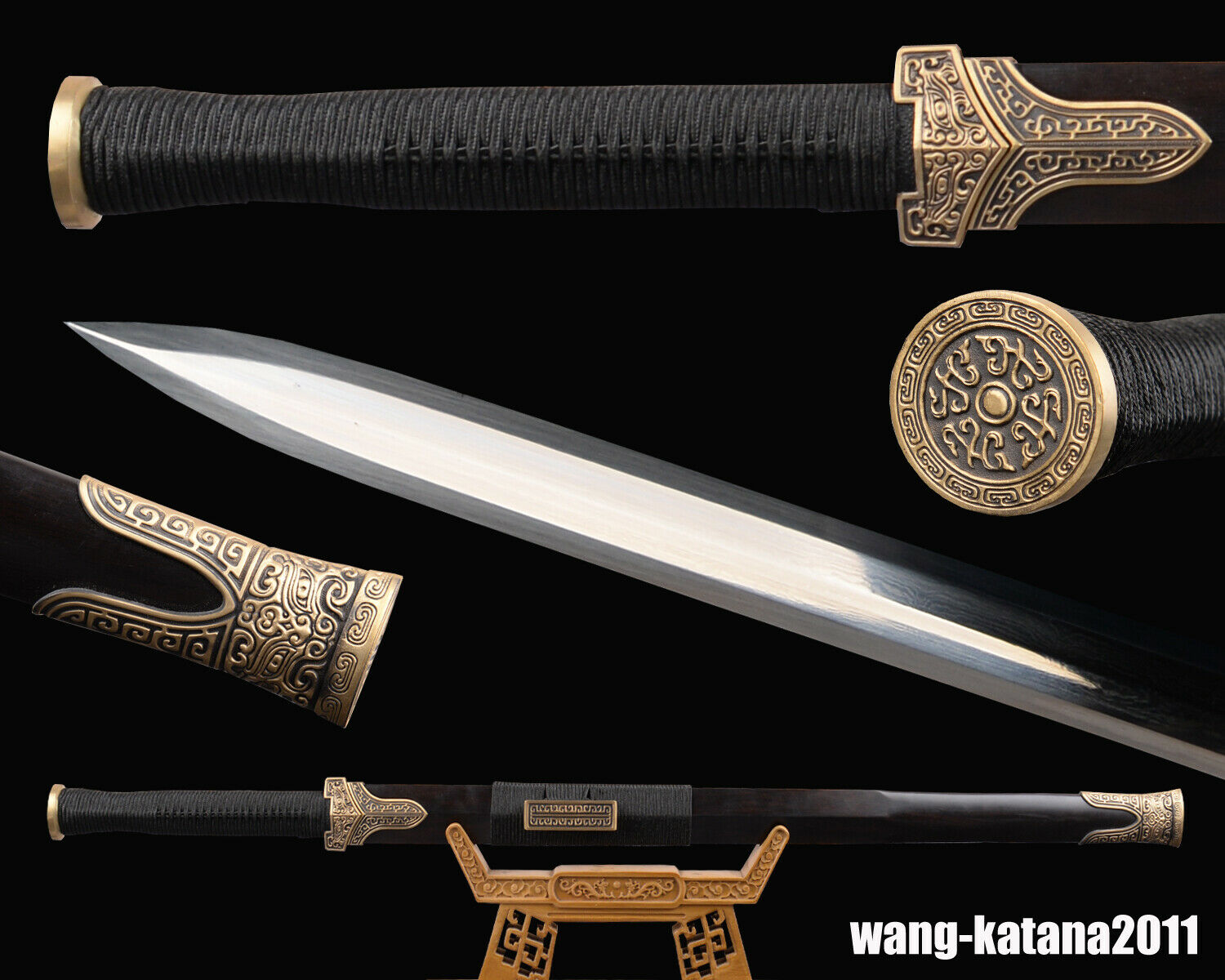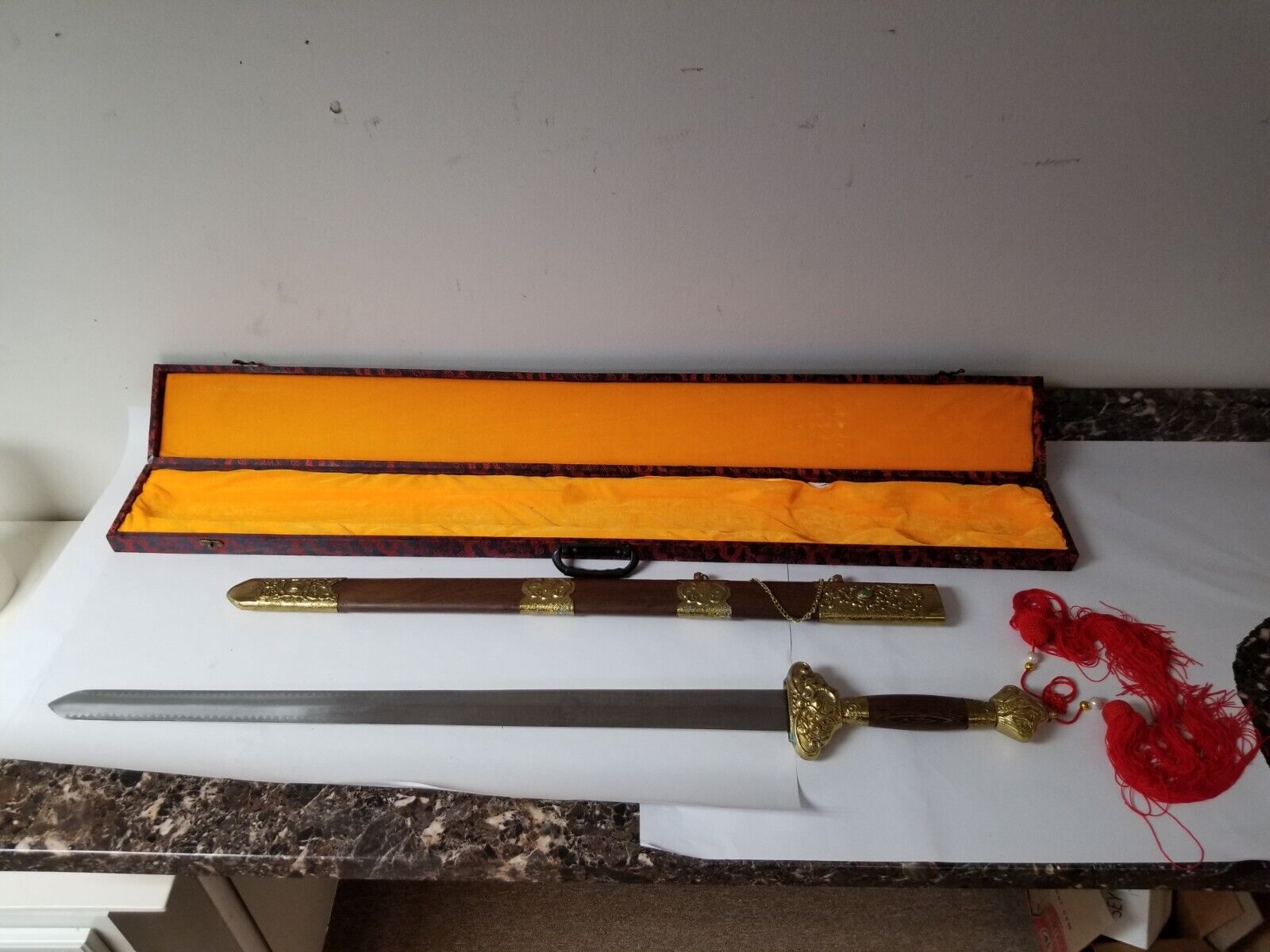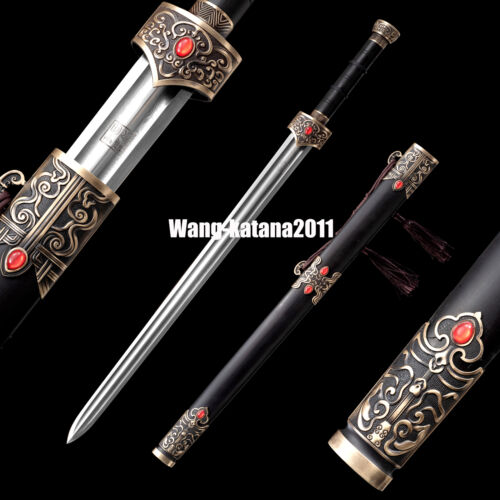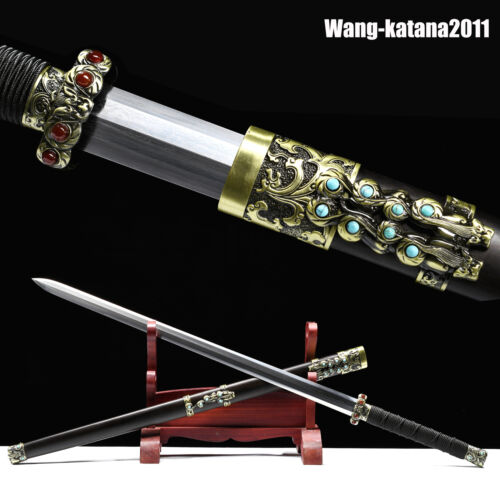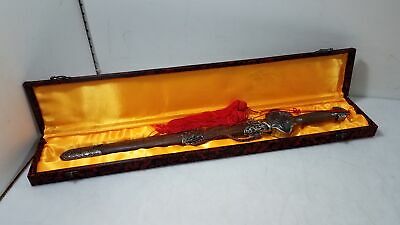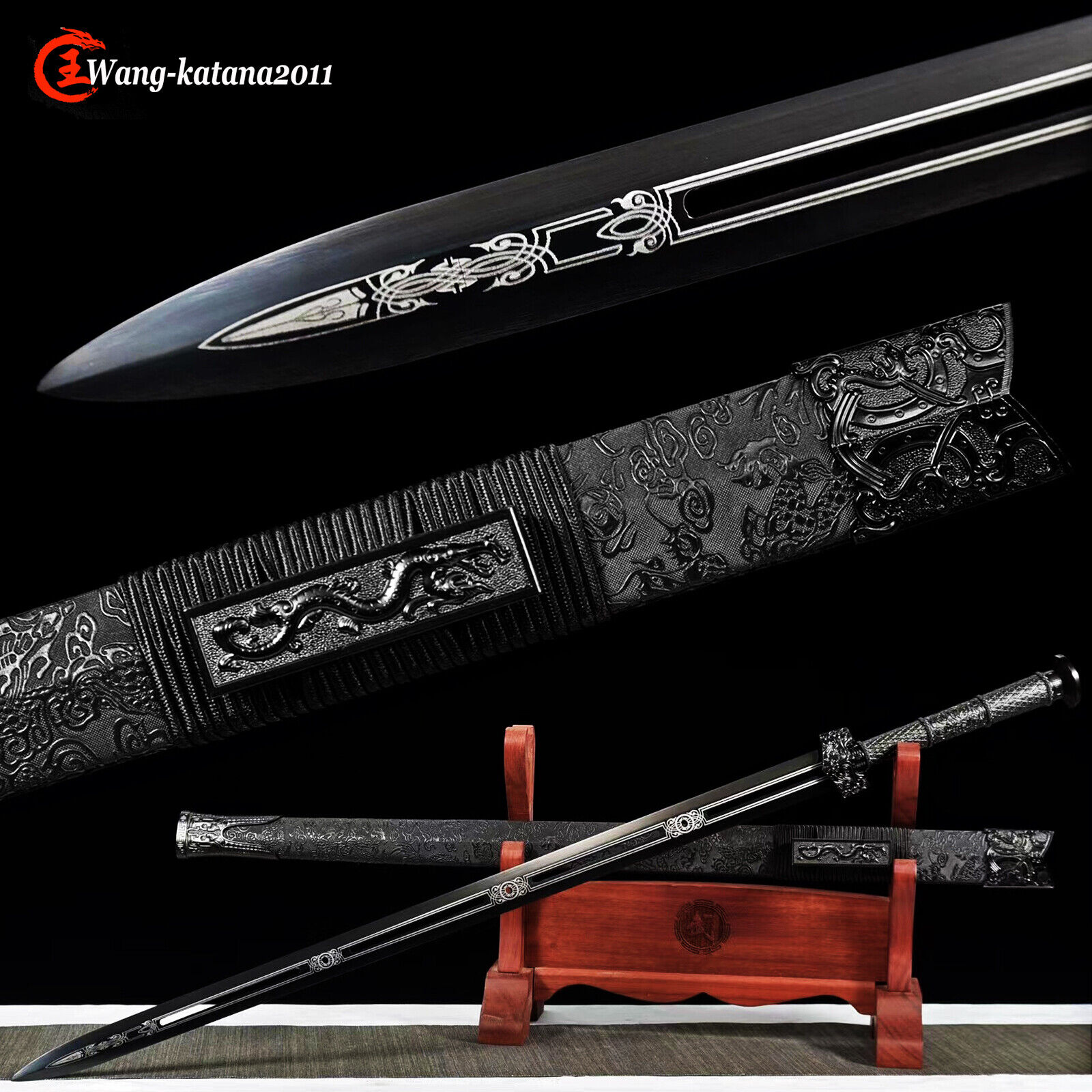-40%
105CM Folded Steel Chinese Tang Dynasty Dao唐刀 Katakirihadukuri Rosewood Sword
$ 68.64
- Description
- Size Guide
Description
Store categorySign Up Now !
You may also like
Folded Steel Chinese Tang Dynasty Dao唐刀 Handmade Katakirihadukuri Rosewood Sword
Product Description
Product Parameter :
Blade Material: 百炼钢,
1095
Carbon Steel, hand
folded
16 times (32768 layers). Damascus folded steel .
Item Number: FCG0039A
Swordsmith: 赵沛炎(Zhao Peiyan), Senior craft artist .
HRC:
56
Overall Length: 105 cm / 41.3"
Blade Length: 77 cm / 30.3"
Handle Length: 26 cm / 10.24"
Blade Width: 3 cm / 1.18''
Total Weight: 1960g
Blade Shape:
Katakirihadukuri
(切刃), Straight Blade .
Hamon :
natural riffle hamon
, caused by folding process.
Bo-hi(blood groove):NO
Handle / Scabbard :
Rosewood
,
(Heavier , Comfortable use , Beautiful natural wood grain)
Other Fittings : Alloy
PACKAGE:
1 sword with scabbard
The sword stand is not include.
Brass cast by dewaxing
:(No
extrusion
casting)
We use the traditional lost-wax method for casting mountings, which is a precision casting method for metal implements. Practice is made of beeswax casting model, and then fill the core with other refractory materials . After heating, the wax mold is melted and lost, so that the whole casting model becomes an empty shell. Then the molten brass water is poured inwards, and the vessel is cast. The utensils cast by losing wax can be exquisitely carved and have hollow - out effect. The effect of the production of the installation is more delicate, three-dimensional sense is stronger, the consumption of man-hours is more.
Manual grinding:
Using the unique bright stone of Longquan Town, hand grinding, very test sword casting skills and technology, grinding out the pattern effect is special texture!
Ancient quenching:
Modern vacuum heat treatment can meet the hardness requirements of most swords, but the traditional quenching method has better effect, can soften the medium strip steel, and the hardness is higher.
Damascus Folded Steel :
In the forging process
, the most useful process is the folding, where the metals are forge welded, folded, and welded again, as many as 16 times. The folding removes impurities and helps even out the carbon content, while the alternating layers combine hardness with ductility to greatly enhance the toughness. The less impurities, the harder and sharper the blade will be. We have done cutting tests on the blades.
it can cut bamboo(young bamboo tree),
grass mattings and slice paper(The blade should be tilted at 45 degrees).
Dao :
Dao
are single-edged
Chinese swords
, primarily used for slashing and chopping. The most common form is also known as the Chinese sabre, although those with wider blades are sometimes referred to as Chinese broadswords.
During the
Tang Dynasty
, dao were exported to both Korea and Japan, influencing the swordsmithing of both nations. The blades of Tang era dao are reminiscent of the Japanese chokuto. As in the preceding dynasties, Tang dynasty dao were straight along the entire length of the blade. Single-handed peidao ("belt dao") were the most common sidearm in the Tang dynasty. These were also known as hengdao ("horizontal dao" or "cross dao") in the preceding Sui dynasty. Two-handed changdao ("long dao") or modao were also used in the Tang, with some units specializing in their use.
Change accessories
Additional Service
Sword Noun Explananation
About us
Delivery details
Change accessories
Alloy Tsuba
Iron Tsuba
Brass Tsuba
TSUBATSUKA-ITO & SAGEO
Tsuka-ito is the wrapping of the tsuka and sageo (下緒 or 下げ緒) is a hanging cord that is passed through the hole in the kurigata (栗形) of a Japanese sword's saya.
SAMEGAWA
Samegawa(鮫皮)is the ray or shark skin wrapping of the tsuka (handle/hilt).
SAYA
The saya is a wooden scabbard for the blade; traditionally done in lacquered wood.
Additional Service
It is
free
for engraving English words,Chinese characters and Japanese Kanji.
You need pay
additional
for engraving patterns (dragon, lion, etc.) or other logos.
Hamon
We can add or remove the machine-made wavy hamon for free.
Bo-hi ( Blood Groove)
Usually thought be used for bloodletting only. It is also used to lighten the weight of the sword. We can add or remove Bo-hi for free
Sharpness
Most of our blades are sharp. We can also make the blade
unsharpened
for free if you require.
Colored Blade
If you want to change to a different color blade, please contact us before purchase.
Matching Swords Set
If you buy one katana, we can make a matching Wakizashi or Tanto for you. The price varies from different swords. Please contact us if you need make custom matching set.
Sword Noun Explananation
Quenching
After the blade has been shaped, the sword would be quenched. We quench our swords in either water or oil. Water quenching produces a tougher edge which can also be hardened further more using clay. Blades quenched in oil are still considerably hardened and do have superior flexibility compared to a water quenched blade.
Folded Steel
:
In the forging process , the most useful process is the folding, where the metals are forge welded, folded, and welded again, as many as 16 times. The folding removes impurities and helps even out the carbon content, while the alternating layers combine hardness with ductility to greatly enhance the toughness. The less impurities, the harder and sharper the blade will be. We have done cutting tests on the blades. it can cut bamboo(young bamboo tree),
grass mattings and slice paper(The blade should be tilted at 45 degrees).
Clay tempered :
To maximize both the cutting edge and the resilience of the sword spine, a technique of differential heat-treatment is used. The sword is painted with layers of clay before heating, providing a thin layer or none at all on the edge of the sword, ensuring quick cooling to maximize the hardening for the edge. A thicker layer of clay is applied to the rest of the blade, causing slower cooling. This creates softer, more resilient steel, allowing the blade to absorb shock without breaking.
About 1095 carbon steel :
The best quality of high carbon steel is at 1095, the carbon content was 1.03%, and the element contains a small amount of chromium, molybdenum, vanadium, after heat treatment can reach HRc58-60 hardness, toughness is very good, but not resistant to rust, more be applied to traditional european-style hunting knife, large cutting knife and military dao. Such as the United States during world war ii "KA - BAR" saber is in 1095 as the blade material.
Kobuse
:
The vast majority of modern katana and
wakizashi are the maru type which is the most basic,
with the entire sword being composed of a single steel. The kobuse type is made using two steels, which are called hagane (edge steel)
and
shingane (core steel).
Steel of different materials is forged and welded together to hammer the basic shape of the sword. This allows the overall blade to have a higher toughness and
absorb a lot of impact. Reducing the possibility of breaking or bending to some extent. Makes the blade not only has high hardness, but also has super toughness
About us
We have our own sword-casting factory.
The factory is located in Longquan, a small town with a long history of sword-casting in China.
Most of the famous Swords in China are made there.
Rich raw materials, skilled technology, traditional sword casting technology from generation to generation.
Real production process picture
The traditional way of making sword by hand
Delivery details
a) Import duties, taxes and charges are not included in the item price or shipping charges.
These charges are the buyer’s responsibility.
b)
Only
paypal
accepted. Paypal is convenient and safe for both of us.
c)
I
f you have any problem after recieve the package (wrong size, wrong style, etc.).
We always provide you with the best after-sales service.
Please g
ive us a chance to help you before you give us a bad feedback.
Thank you very much!
Feedback
